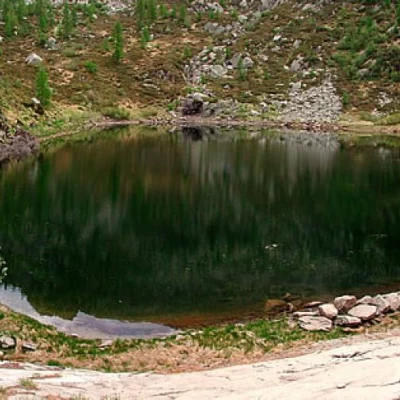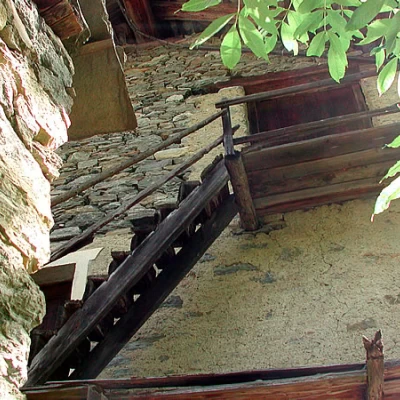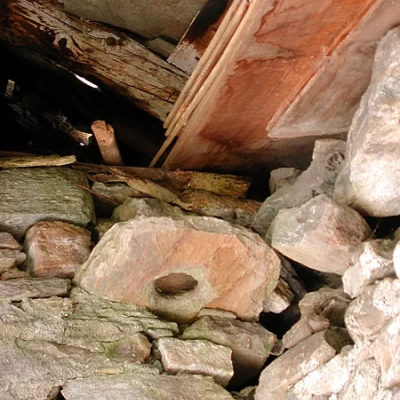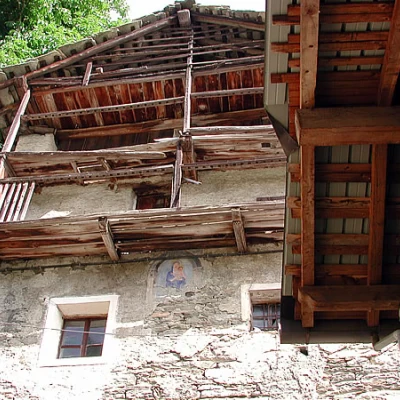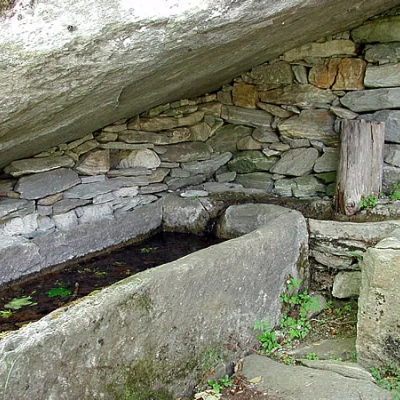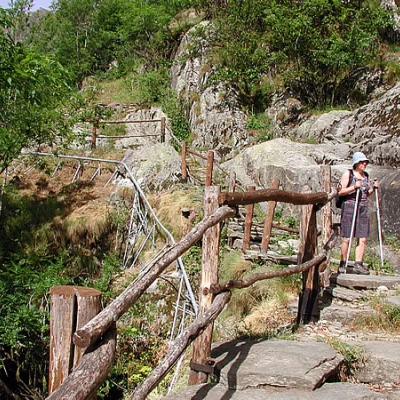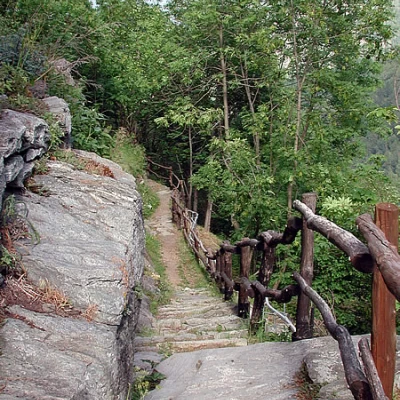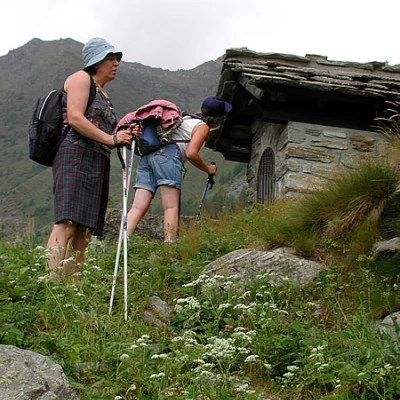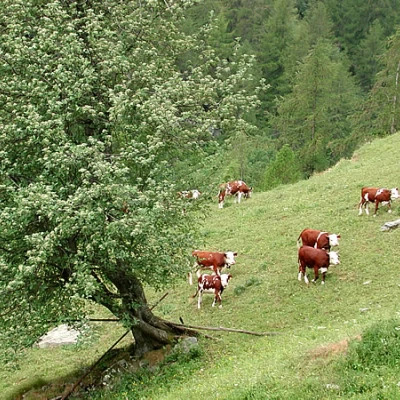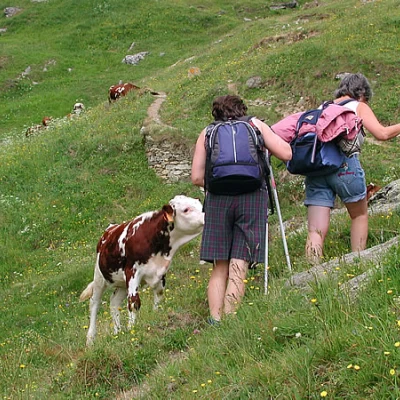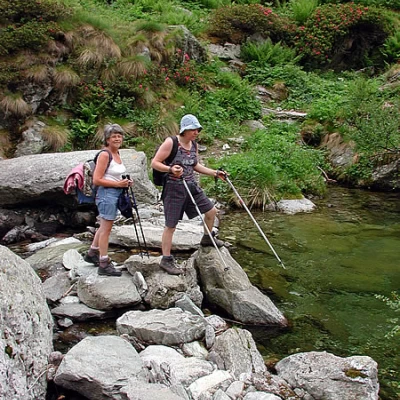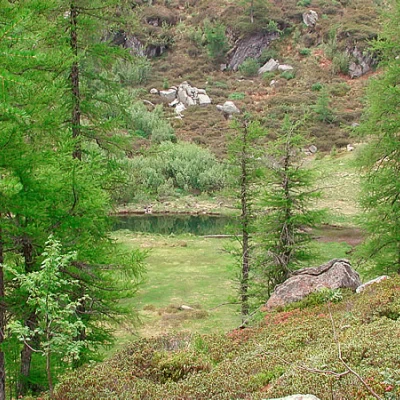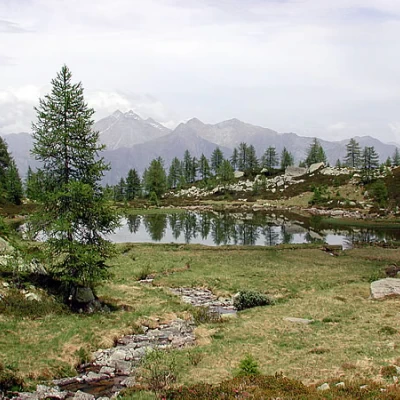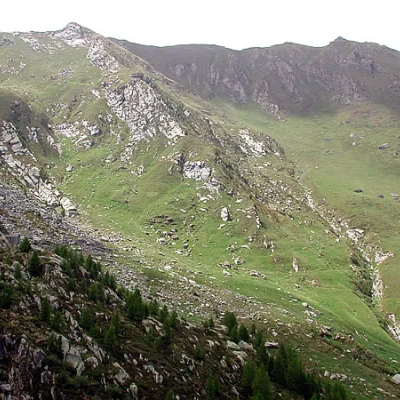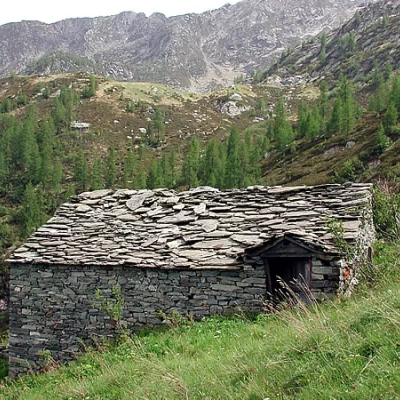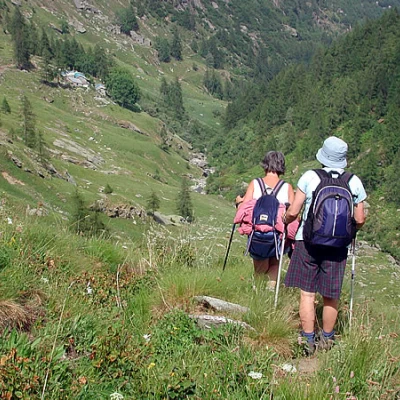Mandaz, from Fournier
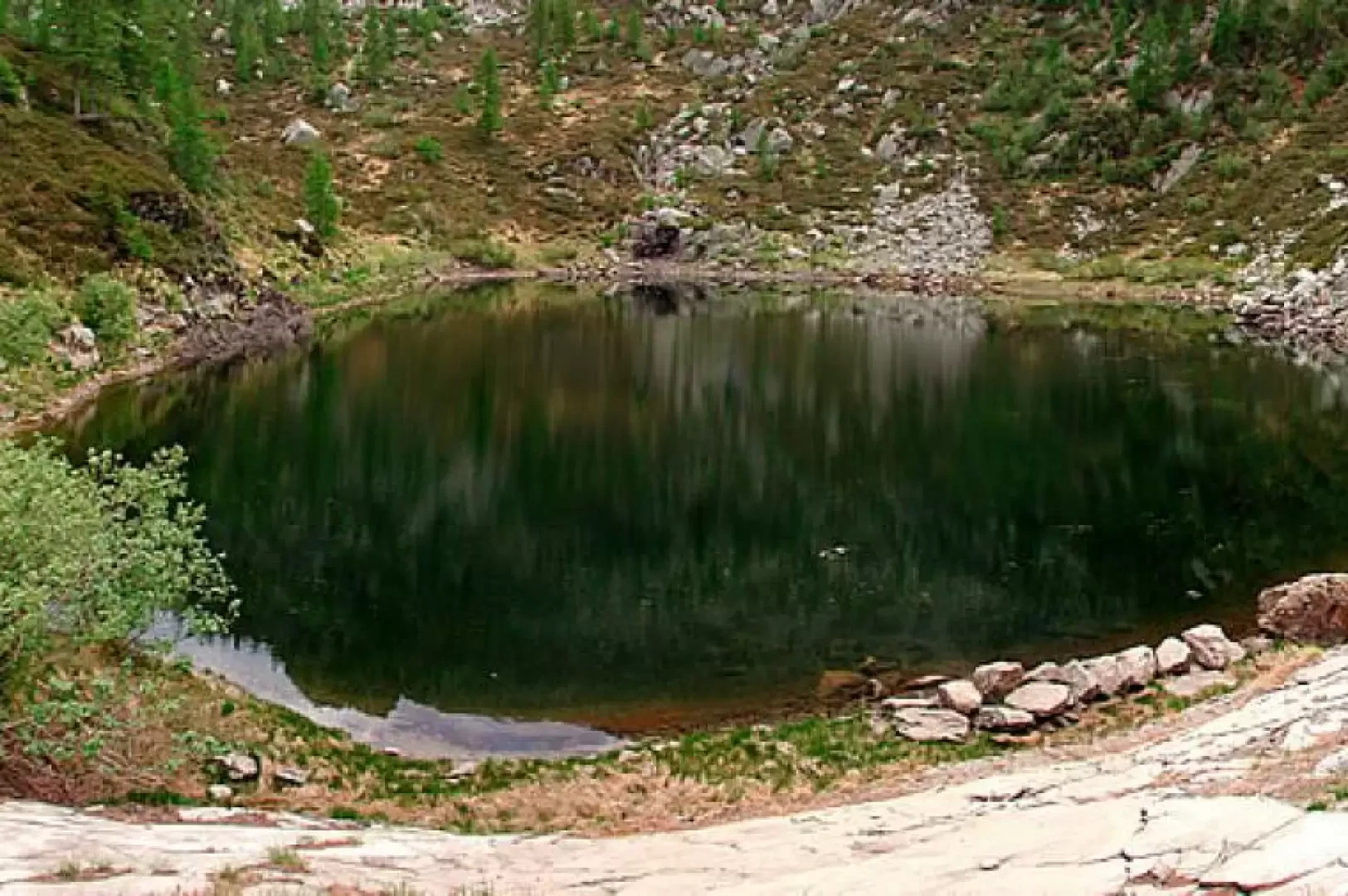
Introduction
Mandaz is a succession of innumerable groups of houses, some still in good condition; there is a school dating from 1888, several fountains and, high up, large pastures, now abandoned huts and a few small lakes; it is a journey into the past, a harsh past, because if there was a school, it means that people lived here all year round.
Description
As soon as we leave the car, the mule track passes between the first houses. The dwellings were very beautiful, some of them multi-storey, with fine details of rural architecture; we encounter rascards with classic stone mushrooms to support the construction, insulating it from rodent incursions, a fine spring, a small church, the school, the bread oven, beautiful stone arches on the doors, another spring, stones set into the supporting walls to facilitate the ascent of those who cultivated. The mule track is wide, and from a certain point onwards is flanked by a monorail serving the mountain pastures. We continue to climb up to the ruins of the la Frete oratory, passing between large stones smoothed over the centuries, among which beautiful red lilies light up in spring, we arrive at a small chapel, Boset Desot (there is a date, 1737) and then Boset Damon, which were probably the oldest settlements. We are at 1567 metres reached in about an hour; the time depends on the stops along the way, and there are many things to look at. A beautiful herd grazes on the flowery meadows; the path comes to a fork, follow the track to the left and ford the stream; some little goats accompany us for a while. We now climb up through dense vegetation, bypassing the Bec Chaty on the left, and pass in front of a large abandoned house, until we reach a hollow where the Lac Sec, almost completely buried, peeps out among the larches; the path is not very evident at times, a few yellow marks help us to disentangle ourselves from the vegetation; having arrived at a fork, keep to the left, and climb again among large rhododendron bushes until we approach the torrent upstream of which there is the Lac Noir artificial dam: when we arrived at the lake the sky was quite overcast, and the lake darker than ever (2h30'). From the lake, retrace your steps to the fork encountered earlier and climb left to the col above. The sign Lago Champas is on a stone, on the ground, a few metres beyond the fork. Lake Champas is the prettiest of all, surrounded by gentle meadows and larches. The path is lost, but we have verified that there are two possibilities: you can either go around the lake to the left, as far as the tributary, cross it and climb up along the meadow to the saddle above, heading west, until you reach the Chanton alp, now abandoned, or you can reach it by going around the lake and the small promontory in front of us on the right-hand side, looking for the sparse yellow markers. From the saddle, the path is visible: it crosses with slight ups and downs until below the Manda alps, camouflaged among the rocks on the upper left; here the path starts, leading to the Chenessy and Cornuto lakes above. At this point, there are two routes: follow the obvious water pipes at high altitude until you reach the Croset Damon alp and from here descend to the Boset Damon alp, rejoining the mule track that you climbed in the morning, or look for the scanty signs indicating the little path that descends to the Chanton alp, and from here cross, on tracks, first over pastures and then through a small larch forest until you reach the Boset Damon alp and the mule track, which you follow again until you reach the car.
